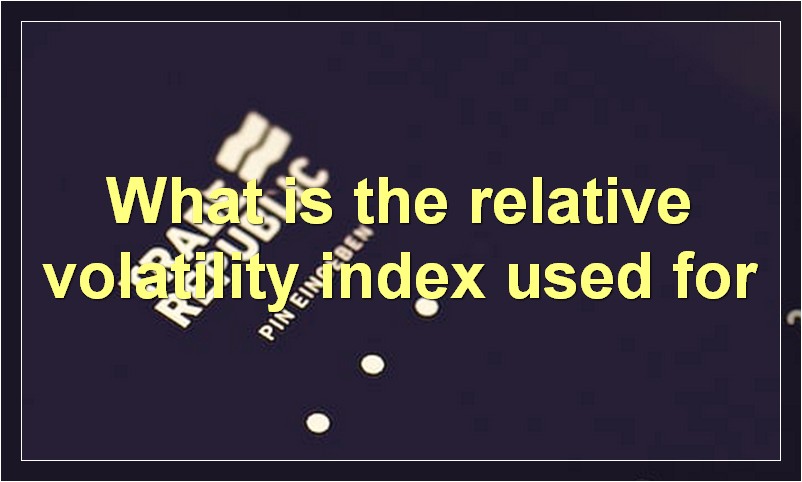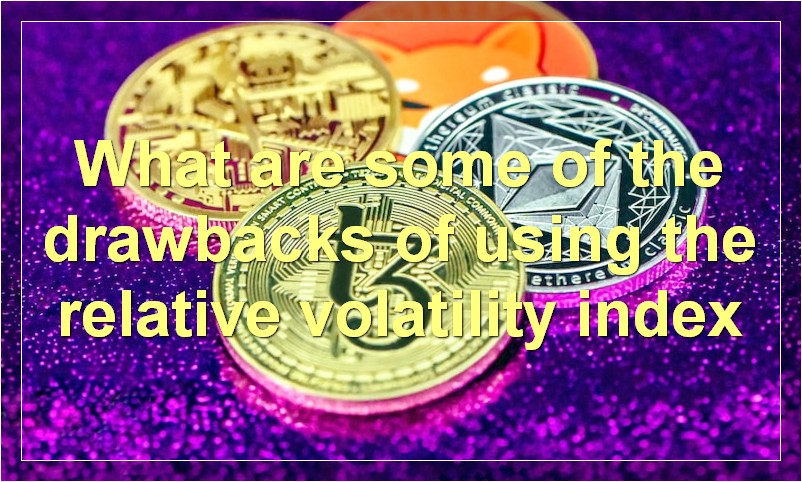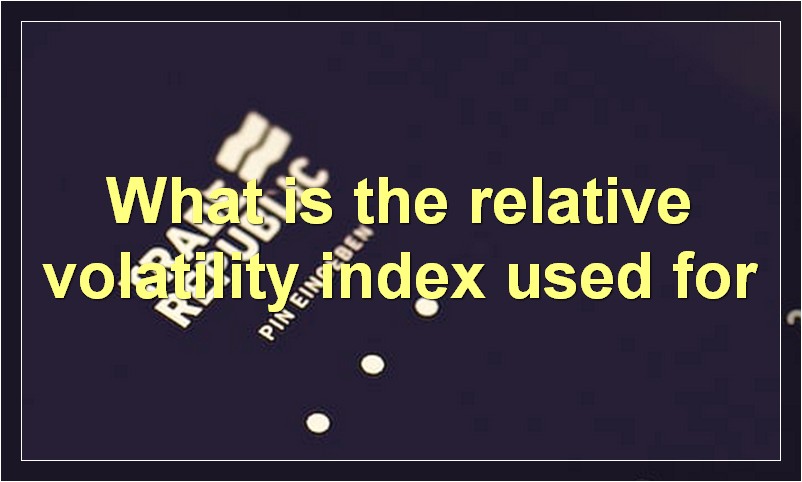The relative volatility index is a technical indicator that measures the amount of variation in a security’s price.
What is the relative volatility index used for

The relative volatility index (RVI) is a technical indicator that measures the relative change in volatility between two period of time. It is used to identify periods of high and low volatility in the market.
The RVI is calculated using the following formula:
RVI = 100 * (HIGH – LOW) / (HIGH + LOW)
where HIGH and LOW are the highest and lowest prices during the period being measured.
The relative volatility index can be used to trade a variety of different assets, including stocks, commodities, and currencies. It is a popular tool among traders and investors alike, as it can help to identify potential opportunities in the market.
There are a few different ways to trade the RVI. One popular strategy is to buy when the RVI falls below 30 and sell when it rises above 70. This strategy is based on the idea that market volatility tends to increase after periods of low volatility, and vice versa.
Another common strategy is to buy when the RVI crosses above its moving average, and sell when it crosses below. This strategy can be used to trade both trend and range-bound markets.
No matter what strategy you use, the relative volatility index can be a helpful tool in your arsenal. It is important to remember, however, that no indicator is perfect, and that the RVI should be used in conjunction with other technical indicators and analysis before making any trading decisions.
How is the relative volatility index calculated
The relative volatility index (RVI) is a technical indicator that measures the size of recent price changes in order to predict future volatility. The RVI is calculated using a moving average of the differences between high and low prices, and is often used as a leading indicator for price breakouts.
When the RVI is above 50, it indicates that recent price changes have been large and that prices are likely to continue to be volatile. When the RVI is below 50, it indicates that recent price changes have been small and that prices are likely to be range-bound.
The RVI can be used to trade both short-term and long-term breakouts. For short-term breakouts, traders will look for a divergence between the RVI and price action. This occurs when the RVI is making new highs while prices are making new lows, or vice versa. This divergence signals that a breakout is likely to occur soon.
For long-term breakouts, traders will look for an extended period of time where the RVI is above 50. This indicates that prices are in a sustained uptrend or downtrend and that a breakout is likely to occur.
How can the relative volatility index be used to trade
Relative volatility index (RVI) is a technical indicator that measures the level of volatility relative to recent price action. Volatility is a measure of how much the price of a security, commodity, or other asset fluctuates. The RVI can be used as a standalone indicator or in conjunction with other technical indicators to help traders make decisions about when to enter and exit trades.
What are some of the benefits of using the relative volatility index
The relative volatility index (RVI) is a technical indicator that measures the level of volatility in relation to recent price changes. The RVI can be used to identify market conditions, as well as potential reversals and breakouts.
Some of the benefits of using the relative volatility index include:
1. The RVI can help identify market conditions.
2. The RVI can be used to identify potential reversals and breakouts.
3. The RVI can help confirm other technical indicators.
4. The RVI is relatively easy to interpret.
What are some of the drawbacks of using the relative volatility index

There are a few potential drawbacks to using the relative volatility index (RVI) as a trading tool. First, the RVI is a lagging indicator, so it can provide false signals in a choppy or consolidating market. Second, the RVI can be affected by temporary spikes in volatility, which can lead to false signals. Finally, the RVI is not always accurate in predicting reversals, so traders need to be aware of this before using it as a sole tool for making trading decisions.
How often do you need to recalculate the relative volatility index
The Relative Volatility Index (RVI) is a technical indicator that measures the size of recent price changes in order to predict market volatility. The RVI is calculated using a simple moving average of price changes, and is considered a leading indicator, meaning that it can be used to predict future market movements.
There is no set answer for how often you need to recalculate the RVI, as it will depend on your individual trading strategy and the time frame you are trading in. However, most traders will calculate the RVI on a daily basis, in order to get a good idea of market conditions.
What happens when the relative volatility index gets too high or too low
If the relative volatility index (RVI) gets too high, it means that price is making large swings and is potentially overbought. If the RVI gets too low, it means that price is consolidating and is potentially oversold.
Is there a limit to how much the relative volatility index can change
There is no limit to how much the relative volatility index can change. However, it is important to note that the relative volatility index is a measure of the Volatility of a security and not the actual price of the security.
Why is the relative volatility index important
The relative volatility index (RVI) is a technical indicator that measures the level of volatility relative to recent price action. The RVI is thought to be a leading indicator, meaning it can help predict future volatility. Many traders use the RVI to time entries and exits in the market.

